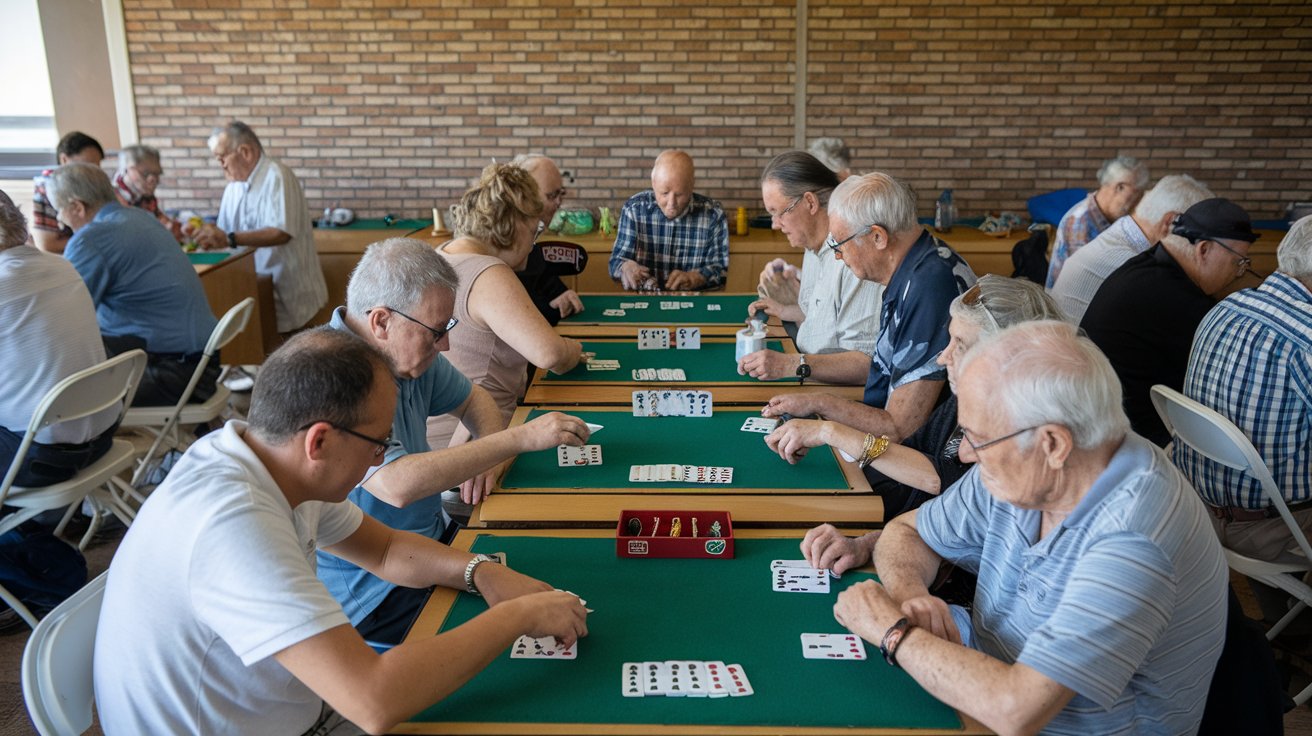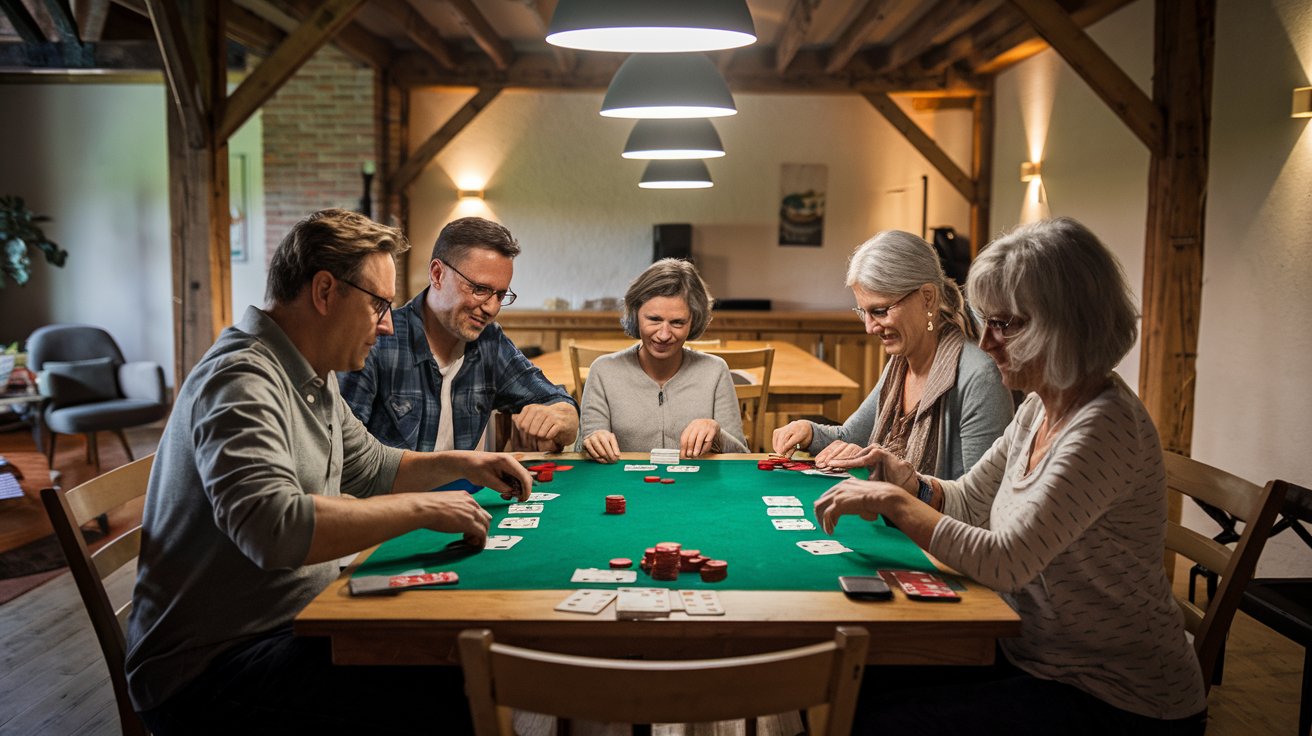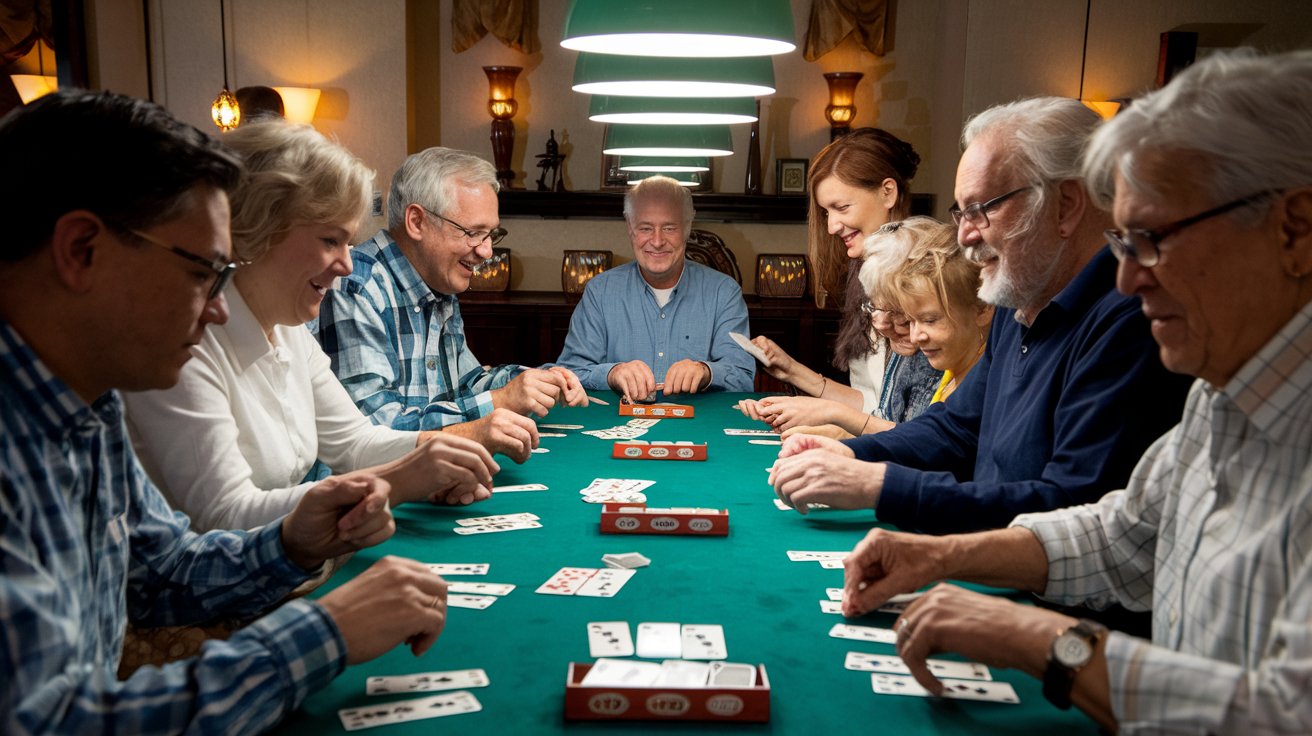Family reunions are a whirlwind of hugs, stories, and that one uncle who still thinks he’s the grill master. Amid the chaos of catching up and dodging questions about “when you’re settling down,” there’s a golden opportunity to bring everyone together: rummy. This classic card game’s a perfect fit for reunions—simple enough for Grandma to join, strategic enough to spark friendly rivalries, and flexible enough to handle a crowd of cousins, kids, and in-laws.
But how do you play rummy during family reunions without it turning into a shouting match over rules or a toddler toppling the deck? This guide’s got you covered. We’ll walk you through setting up, teaching the game, and keeping the vibe light—whether you’ve got a dozen players or a sprawling clan. It’s more than just cards; it’s a chance to bond, laugh, and make memories. Ready to deal in some family fun? Let’s get started!
Why Rummy Shines at Family Reunions
Rummy’s a reunion MVP for a reason. It’s low-cost—just a deck or two—and portable, so you can play on a picnic table, living room floor, or even a porch swing. It scales to any group size, from a quiet trio to a rowdy dozen, and its mix of luck and skill levels the playing field—Great-Aunt Sue might surprise you with a killer meld. Plus, it’s a nostalgia magnet—someone’s bound to say, “We played this at the lake house in ‘92!”
Beyond logistics, rummy’s a bonding tool. It sparks chatter, teases out old stories, and gives everyone—shy teens to chatty elders—a shared focus. Let’s see how to make it work for your crew.
What You’ll Need to Play Rummy at a Family Reunion

Rummy’s gear is simple, but a reunion twist adds flair. Here’s your checklist:
- Decks of Cards: One 52-card deck for 2–4 players; two or more for 5–12+. Grab extras—cards get sticky with BBQ hands.
- Space: A big table’s ideal, but blankets, trays, or clustered chairs work too.
- Scorekeeping: Paper, pens, or a whiteboard—family bragging rights need proof!
- Snacks: Chips, cookies, or fruit—keep it grab-and-go to avoid greasy cards.
- Optional: A family playlist—think Motown or whatever Grandpa hums.
Now, let’s pick the right rummy flavor for your reunion.
Choosing the Best Rummy Variant for Family Reunions
Rummy’s got options—Gin, 500, Indian—but not all suit a reunion’s mix of ages and chaos. Here’s what works:
- Rummy 500: The star pick. Players meld to 500 points, and it handles 2–8+ with ease. Flexible, forgiving, and fun for all.
- Simplified Rummy: For kids or newbies—deal 5 cards, aim for one set (three 3s) or run (4-5-6). No complex scoring.
- Team Rummy: Pair up (e.g., cousins vs. aunts) and share melds—great for big groups and teamwork vibes.
We’ll focus on Rummy 500—it’s the reunion sweet spot—but tweak it as needed. Here’s the rundown.
Rummy 500 Basics: A Family-Friendly Refresher

Lost on rules? Here’s Rummy 500, tailored for your reunion crew:
- Objective: Score 500 points by melding sets (three 7s) and runs (8-9-10 of spades) and laying them down.
- Setup: Use two decks (104 cards) for 6–8 players, three (156 cards) for 9–12. Deal 7 cards each, stack the rest as the stockpile, flip one for the discard pile.
- Gameplay: Draw (stock or discard), meld if you can, discard one. Lay off cards on others’ melds (add a 6 to a 4-5 run).
- Scoring: Face cards = 10, aces = 15 (or 1 unmelded), others = face value. When someone goes out, count melded points minus unmelded cards.
- Winning: First to 500—or set a lower cap (200) for shorter games.
Now, let’s make it reunion-ready with these tips.
Top Tips for Playing Rummy at Family Reunions
Family dynamics add spice—and challenges. These tips keep the game flowing and the mood high.
1. Scale for the Crowd
How: For 6–8, two decks; 9–12, three. Deal 7 cards—fewer (5) for kids, more (10) for pros.
Why It Works: Enough cards for all, and the stockpile holds up.
Pro Tip: Shuffle decks together—duplicate 5s of hearts are fair game and fun.
2. Teach with Patience
How: Start with an open-hand round—cards up, walk through moves (“That 4 goes with 5-6!”). Pair newbies with vets.
Why It Works: No one’s left out, and Grandpa’s “I taught you this!” stories kick in.
Pro Tip: Print a cheat sheet—sets, runs, points—in big font for all.
3. Keep It Quick
How: Set a turn timer (30 seconds) or cap rounds at 200 points instead of 500.
Why It Works: Big groups drag with dawdlers—keep the pace snappy.
Pro Tip: Pause for cake or photos—rummy’s flexible.
4. Team Up the Family
How: Split into teams—kids vs. adults, east-coast vs. west-coast cousins. Teams share melds and points.
Why It Works: Fewer turns, more cheers—perfect for bonding.
Pro Tip: Name teams (“Team BBQ” vs. “Pie Posse”) for laughs.
5. Adapt the Space
How: One big table’s gold, but use picnic blankets, card tables, or floor space. Split into two games if 12+ show up.
Why It Works: Everyone plays—no one’s stuck watching.
Pro Tip: Keep stock and discard central—easy reach, no spills.
Tricks to Make Rummy a Reunion Hit

Want your family begging for “one more hand”? These tricks amp up the fun.
6. Add Family Flair
How: Toss in jokers as “wild cards” named after family legends—“Uncle Joe’s Joker” replaces any card.
Why It Works: Sparks stories (“Joe always cheated!”) and giggles.
Pro Tip: Limit jokers to one per meld—keeps it balanced.
7. Play for Prizes
How: Skip cash—winner gets first dibs on dessert, a silly title (“Rummy Royalty”), or a photo op.
Why It Works: Stakes without wallets—pure reunion spirit.
Pro Tip: Let kids pick prizes—candy or a piggyback ride ups the ante.
8. Mix in a Tournament
How: Run a mini bracket—winners from each round face off in a “family finals.”
Why It Works: Keeps energy up and crowns a champ everyone roots for.
Pro Tip: Short rounds (100 points)—keeps it moving.
Handling Reunion Rummy Challenges
Families are loud, messy, and wonderful—here’s how to dodge pitfalls.
Challenge 1: “Kids Keep Losing!”
Solution: Deal them 5 cards, simplify to one meld. Stack their hand (secretly) with a run once in a while.
Pro Move: Pair them with an adult—team wins melt tantrums.
Challenge 2: “Too Many Players!”
Solution: Cap at 10–12 per game—split into two tables if needed, then merge winners later.
Pro Move: Rotate players—keeps it fresh and fair.
Challenge 3: “Rules Fights!”
Solution: Agree on house rules upfront—write ‘em down. Appoint a “ref” (maybe that bossy aunt).
Pro Move: Laugh it off—“It’s rummy, not rocket science!”
Why Rummy Beats Other Reunion Games
Charades is loud, Monopoly’s a grudge-fest—rummy’s the sweet spot. It’s quieter than shouting “mime!” but livelier than a puzzle. Cheap (just cards), quick (rounds wrap fast), and inclusive (all ages play). It’s the glue for a reunion’s mix of personalities.
Final Thoughts: Deal In the Family Love
Playing rummy during family reunions isn’t just a game—it’s a memory-maker. It’s the cousins giggling over a bluff, Grandma trumping with a set, and the inevitable “one more round” chant. With these tips, you’ll turn your next gathering into a rummy-fueled love-fest—chaos included.
Got a reunion rummy tale? Or a family twist that worked magic? Share it in the comments—I’d love to hear how your clan’s ruling the table. Now grab those decks, rally your kin, and let the melds begin. Happy rummy—and here’s to family ties that shine!

Zareb Saleh is a journalist at Gulf Today and a ghostwriter for Gameoholic, specializing in gaming, technology, and digital culture. With a keen eye for industry trends, he delivers insightful stories that engage and inform readers.




